New testing requirements
There are some important new underground storage tank testing requirements you need know about. These tests are required every year, and some need to be performed every three years. The first tests must be completed by October 13, 2021.
So why do we need more testing? What we’ve learned is that several pieces of equipment related to your UST system can wear out or get damaged over time, and you may not know until it’s too late. Therefore, these tests help you know the condition of certain pieces of critical equipment before they quit working and cause a leak, spill, or overfill. Also, being proactive rather than reactive can save you money and peace of mind.
Annual Testing Requirements
ATG certification:
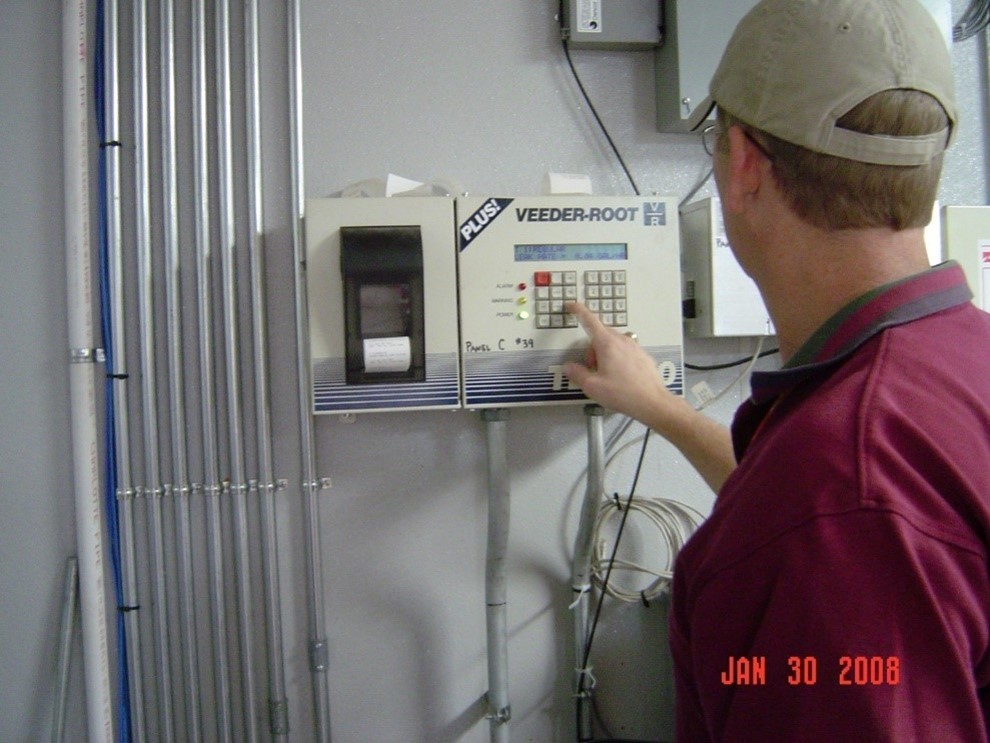 Your automatic tank gauge (ATG) is a complex electronic mechanical device that is used for critical compliance and fuel management. Every year, an annual operation and maintenance test must be performed on the components. In other words, you’re testing that your ATG is functioning and programed properly.
The testing should include checking the ATG console, testing the alarm system, verifying system configuration and testing the battery backup.
In addition, your probes and sensors —the devices that measure fuel and look for leaks— must also be checked to make sure they are functioning properly. Probes are submerged in the fuel for long periods of time and need to be inspected and cleaned. Sensors in the containment sumps can be damaged, worn out, or be incorrectly positioned.
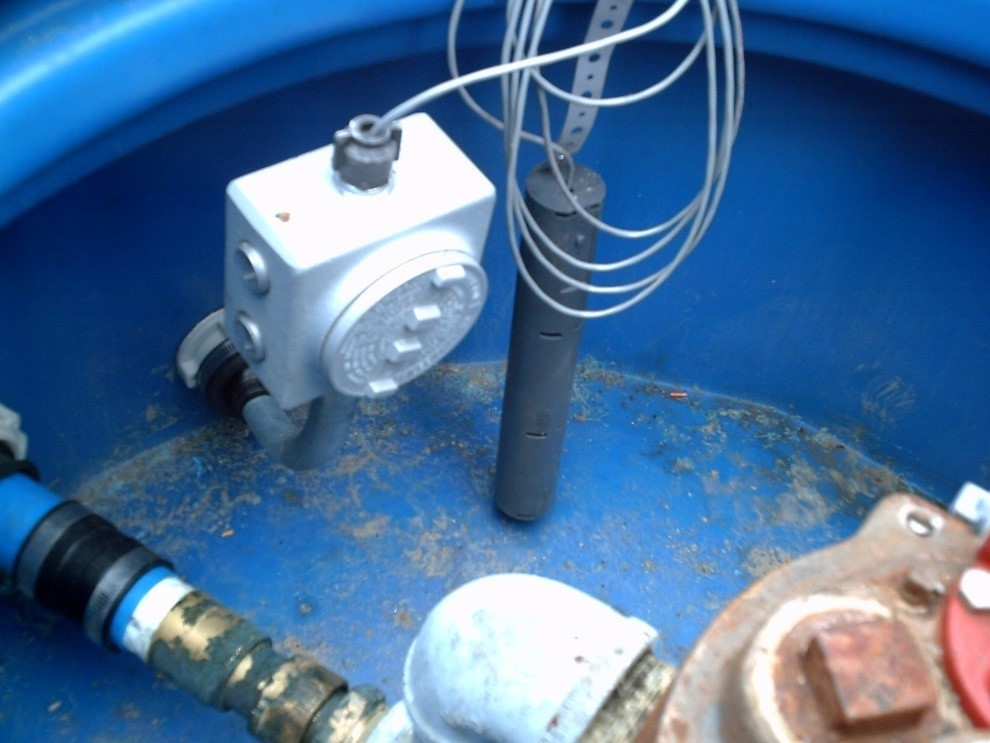 The testing needs to include
- looking for residual build up
- ensuring the floats move freely
- ensuring the probe or sensors are not damaged
- ensuring cables are free of kinks and breaks
- testing the alarm operability for communication with the controller
Your tank gauge software also needs to be checked and verified annually to make sure the programming is correct. There are hundreds of programming points, and an incorrectly programed tank gauge could mean that you might miss a leak. The battery must also be checked so that you don’t permanently lose your leak test and alarm history in the event of a power failure.
Automatic line leak detectors:
Your automatic line leak detectors must be function tested every year to make sure they are working properly. A technician will come onto your site and introduce a controlled leak into the system to see if the leak detector will identify the leak. If it finds the measured leak of 3 gallons per hour—which is a big leak— the system is working properly. If the test does not find the leak, the device is malfunctioning or worn out and must be replaced.
If you have vacuum pumps or pressure gauges, they must be tested to make sure they are working properly and communicating with the controller as well.
Three-Year Testing Requirements
Containment sump testing:
If you have containment sumps used for interstitial monitoring, those sumps must be tightness tested every three years to verify they can contain a leak.
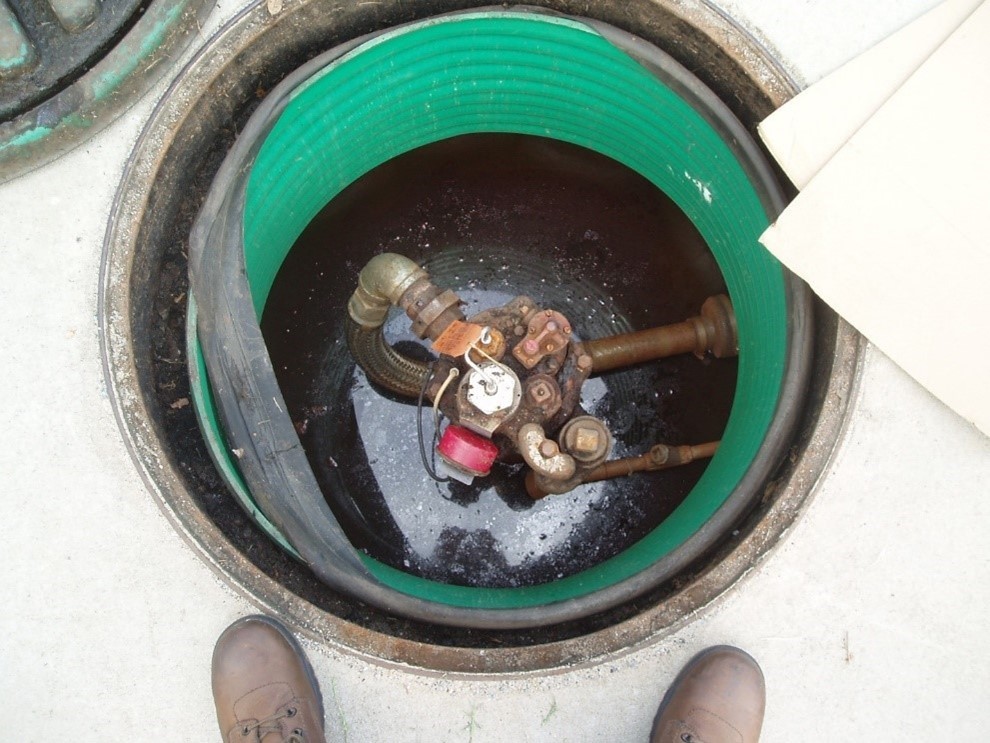 If your system was installed November 26, 2009, or later, this test is mandatory. If it was installed prior, you don’t have to test but it is still a good idea because the fittings between the piping and containment sumps are prone to leaking over time. This important test is the best way to protect your system from a major underground leak.
A technician will come to your site and perform the correct tightness test to make sure all the penetration fittings and seals are tight and there are no structural cracks in the containment sump. During this time, the technician can perform minor adjustments to tightening the system and repair any small cracks. If extensive damage is discovered and cannot be repaired, the entire sump may need to be replaced.
If you happen to have interstitial monitoring double-wall containment sumps, you can monitor the interstice monthly as a substitute for the three-year tightness test.
Spill bucket testing:
Spill buckets at your UST site can experience a lot of wear and tear over the years. Especially if you have a busy site that gets a lot of deliveries. We’ve learned that spill buckets tend to wear out and leak after a certain amount of time, which is why spill bucket tightness testing is now required every three years.
Like the sump test, your technician will come to your site and perform a test to determine whether your spill bucket is leaking or not. Certain repairs can be done if the spill bucket is not tight, unless the damage is so significant that the spill bucket needs to be replaced.
If you have a double-wall spill bucket and you continuously monitor the interstitial space between the inner and the outer wall of the bucket. You do not have to perform a tightness test.
Overfill device testing:
Another three-year testing requirement is to function test your overfill prevention device. You may recall, you’re allowed one or more of the following options to meet the overfill prevention requirement, a high-level alarm, automatic shut-off device, or an existing ball float valve for older systems. New systems, or systems that need to modify their overfill devices, may not use ball float valves.
These devices either stop an overfill of an underground tank during a delivery, slow down the delivery, or alert the driver the tank is nearly full.
You must have a Montana licensed individual function test the device and make sure it is functioning properly. Otherwise, you might not be able to prevent a tank overfill.
If using an overfill alarm, the function test will ensure that your overfill alarm works (it flashes and beeps) when the tank is 90% full.
If using a flapper valve, the function test will ensure that your flapper valve functions properly and activates at the correct height (stops the flow of fuel if filled to 95% capacity).
If using a ball flow valve, the function test will ensure that your ball flow valve is functioning and set at the proper height when the tank is filled to 90% capacity. If a ball float fails an overfill inspection, it cannot be replaced or repaired, and another approved device must be installed.
Remember, if any of these devices are malfunctioning, the device must be repaired or replaced depending on the extent of the problem.
Testing rules require that the licensee remove the devices and physically function test them to make sure that mechanical parts and alarm signals are working properly.
Testing procedures
All the three-year testing must be performed by a Montana DEQ licensed individual. Licensed individuals can be found on DEQ’s website at https://deq.mt.gov/twr/resources under Underground Storage Tanks - LICENSED INDIVIDUALS/LICENSEE TESTING
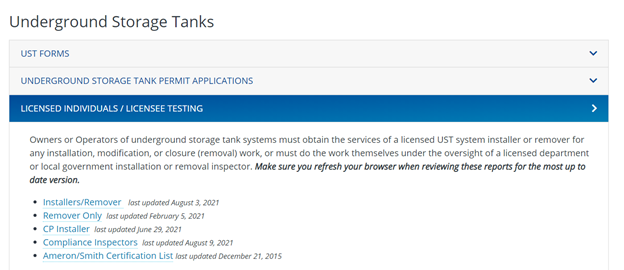 It’s important to be aware of these new rules and it’s even more important to line up your licensed contractor to have these new annual and three-year tests performed.
Walkthrough Inspection Reminders
One of the most important things you can do as a UST owner/operator is to perform periodic walk-through inspections. Don’t forget, no later than October 13, 2021, owners and/or operators of UST systems must complete walkthroughs on a monthly and annual basis.
Whoever performs your inspection should be properly trained in inspections and personal protective equipment. It is important to use proper safety procedures including using barricades, using a vehicle to block yourself from traffic, using personal protective gear like gloves, safety glasses, steel toed shoes, and performing inspections when the site is the least busy.
When performing an inspection, use the one-page Montana DEQ 30-day and annual walk-through inspection form. It contains inspection information for the entire year, so make sure that you don’t lose it! The form can be found online at: https://deq.mt.gov/twr/Programs/ust
30-day inspection
- Visually check spill prevention equipment for damage and remove liquid or debris.
- Check for and remove obstructions in the fill pipe.
- Check the fill cap to make sure it is securely fitting on the fill pipe.
- For double wall spill prevention equipment with interstitial monitoring, check for leaks in the interstitial area.
- Check the release detection equipment to make sure it is operating with no alarms or unusual operating conditions present.
- Ensure records of release detection testing are reviewed and current.
Annual walk-through inspection
- Visually check containment stumps for damage, leaks to the containment area, or releases to the environment.
- Remove liquid and debris from the containment sumps.
- For double walled sumps with interstitial monitoring, check for a leak in the interstitial area.
- Check handheld release detection equipment such as 10-gauge sticks for operability and serviceability.
Recap
- Make sure you have properly trained staff to perform 30 day and annual inspections.
- Mark your calendar when the inspections are due.
- Use MT DEQ’s Walkthrough Inspection form.
- Understand what you’re looking at.
- Keep your form for at least one year and have it readily available for inspection.
- If you find problems, get them fixed right away.
Facility Upgrades: An Opportunity to Promote Cleanup and Resolution of Petroleum Releases
Petroleum releases (releases) at active fueling facilities (facilities) can be challenging to clean up and resolve because the petroleum-contaminated soil is typically located beneath petroleum storage tanks (PST), dispenser islands, associated piping or facility buildings. Petroleum-contaminated soil remains a petroleum source, leaches to groundwater, and maintains a petroleum-contaminated plume long after leaking components of a PTS system have been replaced, repaired, or removed.
Consequently, many releases are persistent and remain unresolved for years or decades because petroleum sources remain inaccessible and remediation options are limited. However, when a facility removes or upgrades PSTs, dispenser islands, etc. there is a time-limited opportunity to access and cleanup petroleum sources and thereby move a release toward resolution.
Facility and PTS system upgrades are often planned out several years in advance of construction; and when the facility’s environmental consultant and DEQ Petroleum Tank Cleanup Section (PTCS) are kept informed of those plans, there is an opportunity to coordinate access and cleanup via removal of petroleum-contaminated soil.
Including PTCS project managers in early planning phases will allow for preparation work including soil investigation to determine cleanup extent and volume; consideration of cleanup methods and costs; and generation of DEQ-approved work plans in preparation for access to the petroleum-contaminated soil. The detailed cleanup planning and reporting often facilitates reimbursement of an owner’s remediation costs by the Petroleum Tank Release Compensation Fund for eligible releases.
Early communication and coordination of plans between facility owners, operators, responsible parties, consultants, and PTCS project managers allows cleanup remediation work to occur in the limited time between demolition and construction phases of work. This communication and coordination of plans and work is appliable to facilities with PTS systems ranging from small historic releases at current and former service stations; upgrades, removal, and replacement of PST systems; and multiple large releases at current and former truck stops. The results of coordination of these plans can effectively clean up petroleum contamination to the extent practicable and advance a release toward closure resolution.
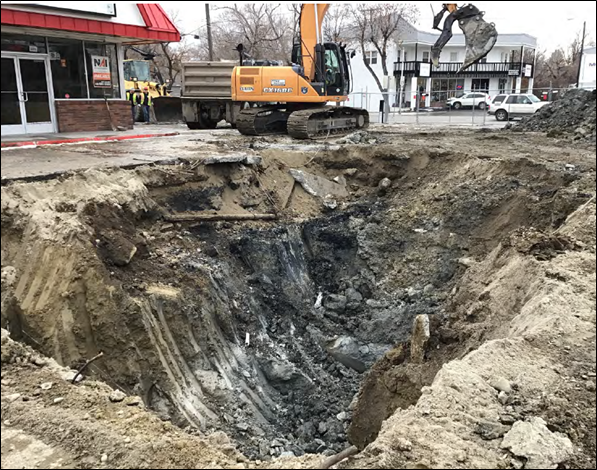 Figure 1: Example of successful cleanup of a persistent release at a medium-sized convenience-store PST system by coordinating plans with site demolition and redevelopment construction work.
Figure 1 shows excavation and removal of 625 cubic yards of previously inaccessible petroleum-source soil beneath the dispenser island at a convenience store with a persistent release confirmed in 1990. The dark-colored soil at center of view is stained with petroleum; the brown/tan colored soil around edges of excavation is not petroleum stained.
The current owners of this convenience store property began planning in January 2019 for removal of the PST system and demolition of the dispenser-island canopy; and they coordinated these plans with their environmental consultant and PTCS project managers. Following site demolition work, this planning and coordination allowed the project managers to initiate work plans to conduct an excavation to 16 feet below ground surface during November 2019, remove and dispose 625 cubic yards of petroleum-contaminated soil, and restore the site for redevelopment and construction. The facility is now in compliance monitoring in preparation for future resolution and closure of the facility’s release. The successful cleanup of this release was made possible by the owner’s early communication and coordination of demolition and construction plans.
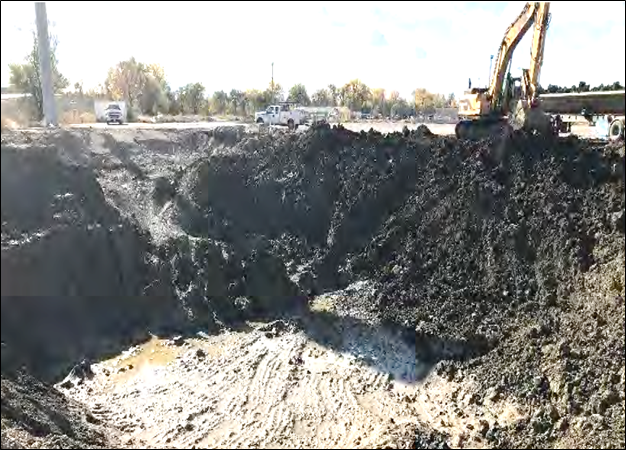 Figure 2: Example of successful cleanup of multiple persistent releases at a large truck-stop PST system by coordinating plans with site demolition and redevelopment construction work.
Figure 2 shows excavation and removal of 15,000 cubic yards of previously inaccessible petroleum-source soil beneath the PST system and facility building at a large truck stop. The dark-colored soil on the side wall at center-of-view is stained with petroleum, the brown/tan colored soil in left and right sidewalls and the base of excavation is not petroleum stained.
The owners of this truck stop in Eastern Montana with petroleum releases dating to 1990 began planning circa 2015 for a major facility upgrade to include demolition and removal of the PST system and facility building. The owners coordinated plans and construction schedules with their environmental consultant and PTCS project managers. This allowed project managers to initiate work plans to determine volumes of overburden soil and petroleum-source soil, coordinate site demolition work with the excavation to 20 feet below ground surface during 2020, remove and dispose of 15,000 cubic yards of petroleum-contaminated soil, remove, treat, and dispose of 42,000 gallons of petroleum-contaminated water, and restore the site for future construction. The facility is now in compliance monitoring in preparation for future resolution and closure of the facility’s Releases. Successful cleanup of these Releases was made possible by the owner’s early communication and coordination with demolition and construction plans.
|